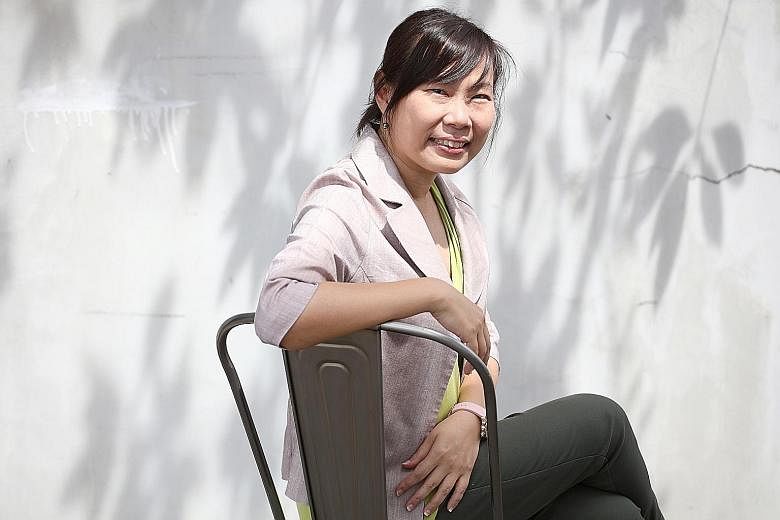History remembers them only vaguely as dancers who plied their trade in risque cabarets, but many of the "lancing girls" from the 1920s to 1960s were in fact hostesses with hearts of gold.
The stories of these women, who worked the floor at the amusement parks of New World, Great World and Happy World, will come to light in a new book, The Lancing Girls Of A Happy World, which will be released in September. The term "lancing girl" comes from a local mispronunciation of "dancing".
The historical book was quite the leap for author Adeline Foo, 46, who has so far published only children's books such as the best-selling Diary Of Amos Lee series.
It began life as a screenplay, written by the mother of three in 2009 as part of a dramatic writing course at New York University's Tisch Asia.
She was inspired by a throwaway line in a National Day supplement by The Straits Times, which mentioned a primary school set up by two cabaret dancers.
This, she would later discover through research, was the Happy School in Geylang, founded in 1946 by New World dance hostesses He Yan Na and Xu Qian Hong.
Both came from poor families and had little to no education. For the next five years, each would donate half her salary to the school so that street children could be educated for free.
Fascinated by the world of these cabaret dancers, Foo went on to spend eight months researching it last year after being awarded the National Library's Lee Kong Chian Research Fellowship. She later decided to turn her research into a book after meeting Ethos Books' publisher Fong Hoe Fang.
This included tracking down and interviewing former cabaret dancers as well as singers and clients. These included an ex-boyfriend of Singapore's most famous lancing girl, Rose Chan, known for her daring stripteases and onstage antics with a python.
These accounts painted a glitzy but gruelling world where glamorous women in figure-hugging cheongsam with thigh-high slits danced in heels from 6pm to midnight with customers.
Each woman was only as good as her dance moves and had to know a dizzying repertoire of steps, from the Malay ronggeng and joget to the Western foxtrot and cha-cha, which they studied by watching the movies of Fred Astaire and Ginger Rogers (iconic dance partners during the golden age of Hollywood).
A popular dancer could earn $1,000 a month - nearly four times what a woman could earn as a senior clerk at that time - but the work was exhausting and often dangerous, especially when coping with customers who felt paying for a dancer's time was akin to paying for her body.
One of the two former dancers Foo interviewed was brought into the cabaret by her mother, another lancing girl, when she was 12.
Both, who are in their late 60s and 70s, declined to give their real names for the book because the stigma against their former profession still exists today. One recently found herself ostracised by her choir group after they discovered she used to be in a cabaret.
Foo hopes her upcoming book can shed light on a marginalised profession.
"I read a lot of articles about men who are decorated and acknowledged for their contributions in the past, but not a lot on women.
"These women did charity, but have been washed out of history. Still, they're as Singaporean as you or me. They lived exciting lives and lived them with no regret."


